Combined Arms: Warlord’s WWII Campaign Game
By Troy Hill
Well, Warlord did it again.
They released a new game. That uses rules from their other games. For an entirely new game. Or something like that.
Combined Arms is both a stand-alone board game, and a campaign set for Warlord’s suite of World War II games, Bolt Action, Blood Red Skies, Cruel Seas, and Victory at Sea.
And my gaming group in Indiana has been salivating for a campaign system we can use. Warlord timed the release of the game well, right as gaming is ramping up across the globe after two years mostly in pandemic lockdowns.
There are several good videos on gameplay walk-throughs. I recommend Doug Glover’s video (of the Lead Pursuit podcast).
The Game
In a nutshell, two players select one of several map boards on which to do battle. One takes the axis side, the other the allies side. They chose the objectives they’ll struggle for, and place these on the map. They select their forces from Infantry, Armor, Sea, and Air assets. Those get places in the opposing starting zones. Players then take turns activating and moving assets. Where they meet in adjoining hexes, battle ensues.

Two types of cards make the game move beyond a basic board game. The initiative cards and resolution cards both affect turns, and the overall game.
In the board game version, combat between the two systems is decided with a single set of opposing die rolls.
But where the strength in this game lies is in incorporating it into a gaming experience using the other tabletop games like Bolt Action or Blood Red Skies.
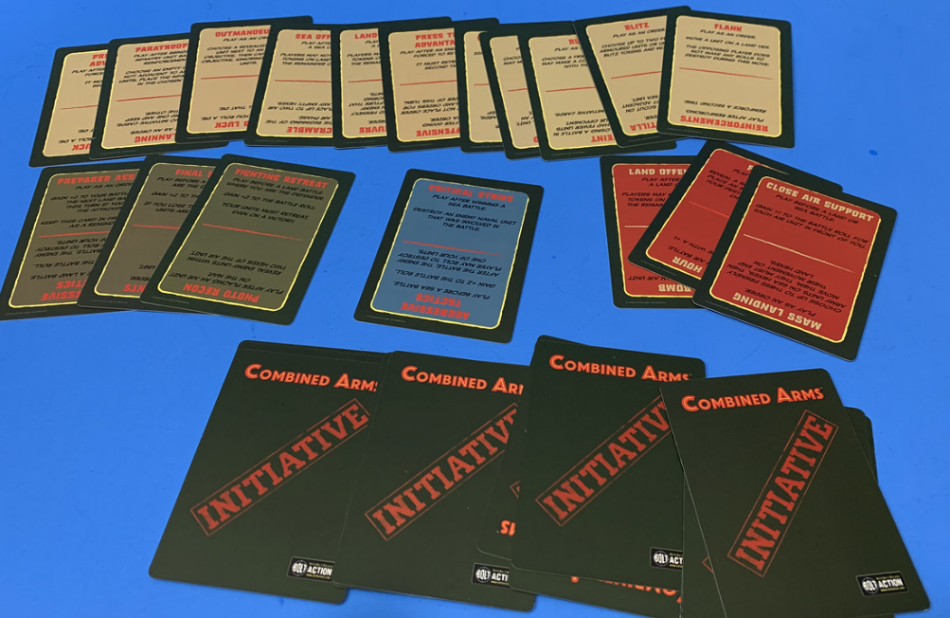
Campaigns
The map boards can be used as a campaign space, and forces deployed. Where two opposing land forces meet, players switch to Bolt Action and battle out an appropriate scenario. The same for sea to sea, or air to air combat. Air raids on land or sea targets can also be decided using the Air Strike rules from Blood Red skies.
Once the battles are fought via the other games, forces are defeated, and victors advance.
The initiative and resolution cards again come into play with the various battle games played during a campaign.
Initiative Cards
For the board game version, there are generic initiative cards. But, for the campaign games with the other systems, some of the initiative cards are swapped out, for ones more appropriate to that type of battle. What is interesting about the initiative cards is that each card has two effects, and a player much choose one to play, then discard.
Some of these cards have an effect that will affect later actions, such as Prepared assault. Playing this gives the player a +2 bonus to their next combat roll but it must be played as an order in lieu of moving a unit. The other effect option on that card is Aggressive Tactics. With it, the player gains the same bonus immediately in the forthcoming battle. But, the opposing player may make a roll following the combat to destroy one of your units.
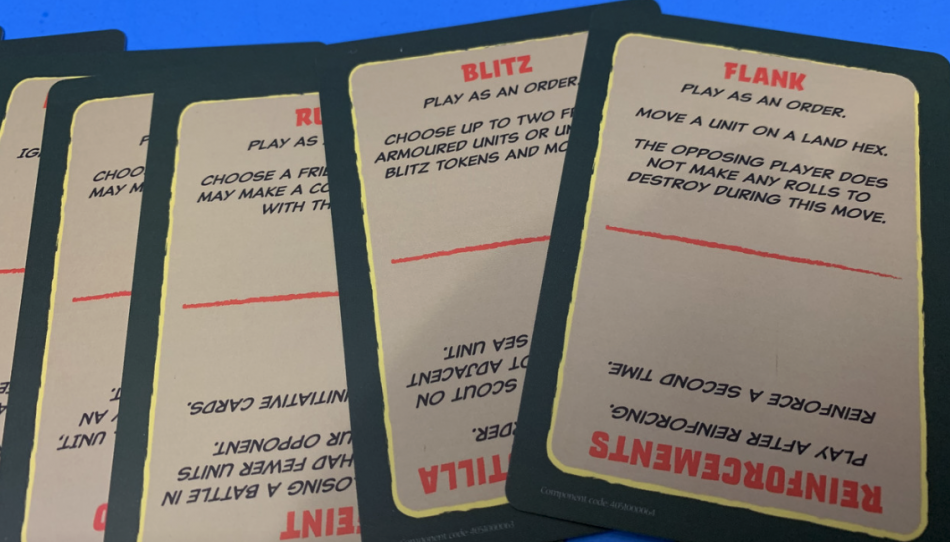
Cards like that are swapped out for Bolt Action-specific cards when the game is used as a campaign aid. One card in the Bolt Action replacements contains cards such as Air Support, or Final Stand. Air Support provides a free air observer in the Bolt Action battle to the side that plays the card – if the side has any air units on the campaign board or waiting to be placed. Final Stand allows a side in an Attacker-Defender mission to gain the Fanatic rule for all infantry and artillery units. However, if that side loses the battle, their force cannot retreat on the campaign board.
Resolution Cards
The resolution cards also have dual outcomes. There are five types of objectives that can be placed on the campaign map, and a card corresponds to each. But each card has two potential sides. So when shuffled, they are shuffled in a way to randomize which side is up and will become active.
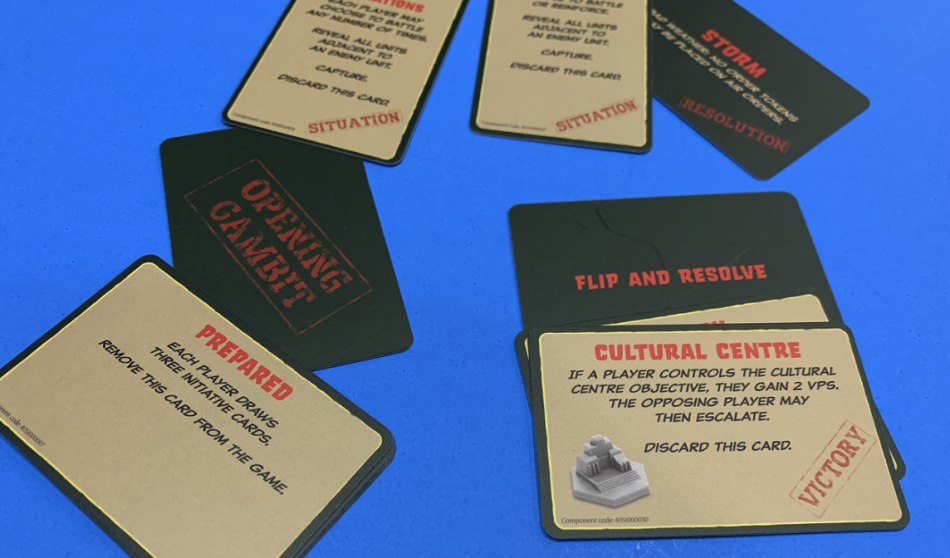
For example, the Factory Objective card provides a special rule for reinforcing armoured units, for the player who controls that factory. The opposite side of the card, brands the objective as a Supply Depot instead of a factory. It gives an extra hex of movement to friendly units that begin their move next to the supply depot.
Some of the resolution cards have only one effect. One side reads, flip and resolve. The other might read: Radar Station: If a player controls the Radar station objective, they gain 1 VP.
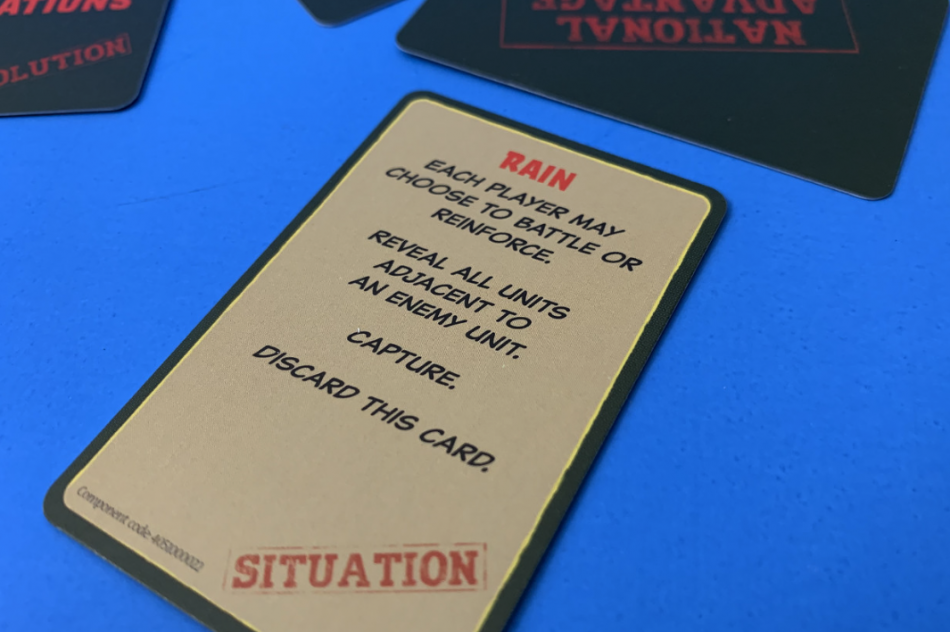
Other resolution cards are weather conditions. One side might read: Storm, which eliminates orders to air unit in that phase. That side is called the passive side, and is effect while the card is on top of the deck. In the resolution phase, after the air phase, that card is flipped face up, and the other side of the card is activated.
The Storm card’s active side reads: Each player may choose to battle or reinforce. Reveal all units adjacent to an Enemy Unit. Reveal all units in sea hexes that are not adjacent to a land hex…
National Advantage Cards
These are selected by players, one for each force, and they have a passive effect on the force throughout the game. For example, the Economic Might card allows a player to discard their remaining initiative cards (at least one) to reinforce a second time in that phase.
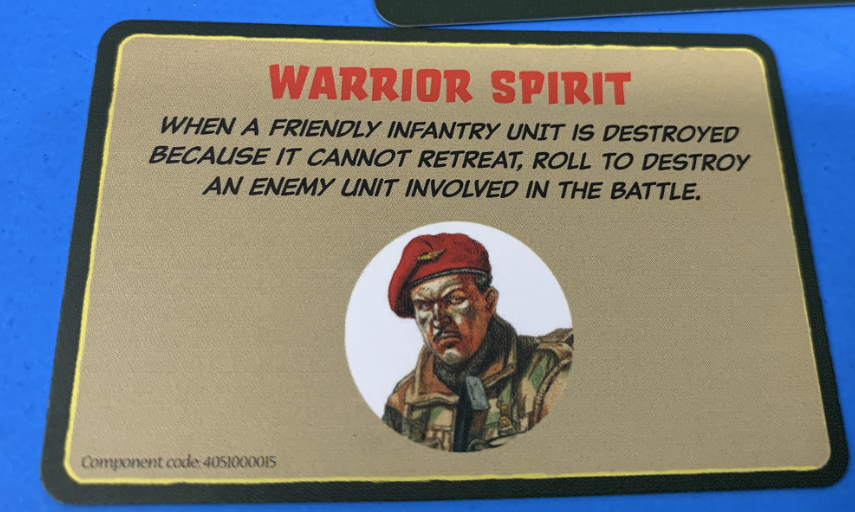
Some, none or all
Playgroups can use some or all of the individual games during campaign play. If a gaming group only plays, say, Bolt Action, then air and sea battles would be fought as per the board game, with land battles moving over to the Bolt Action system.
Our own gaming group here in NorthEast Indiana has all three games, Bolt Action, Blood Red Skies, and Victory at Sea. We haven’t parsed out how exactly we’re going to run the upcoming campaign set in North Africa. However, land, sea, and air battles will all be fought.
The challenge to running such a campaign may not be in parsing the rules, but in keeping the game board and counters in place. I’ve heard reports of magnetizing all pieces and using a metal whiteboard as backer, and note-keeping device.
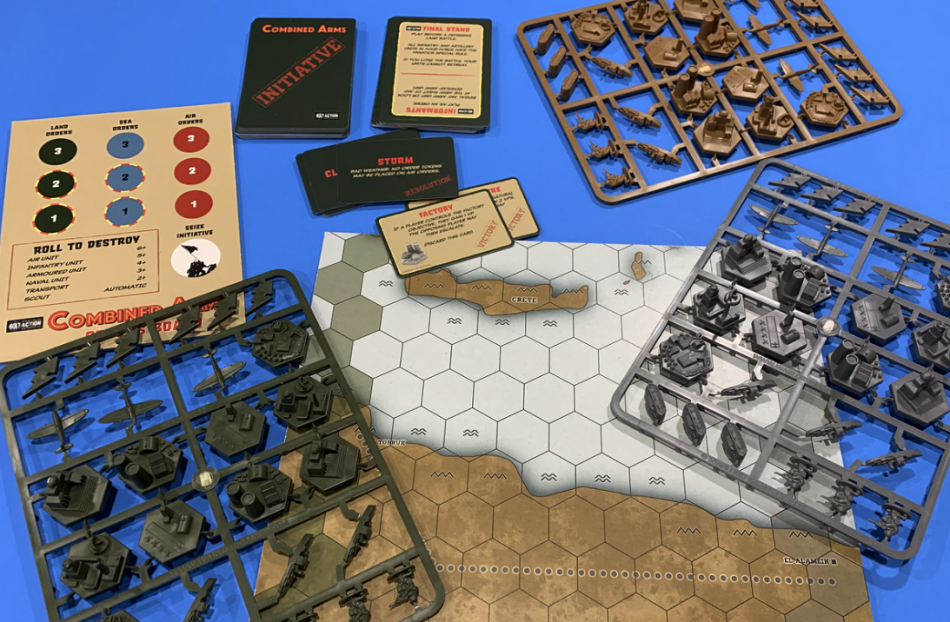
Creative use of photos of the board posted to social media, or other media could also be used.
In addition, as any other rules set, this can be tweaked for individual groups’ styles. If some of the cards or effects don’t fit the theatre, or the gaming groups’ style, then skip those, and use the others. The game is designed to be tailored to what players want for their campaign system.
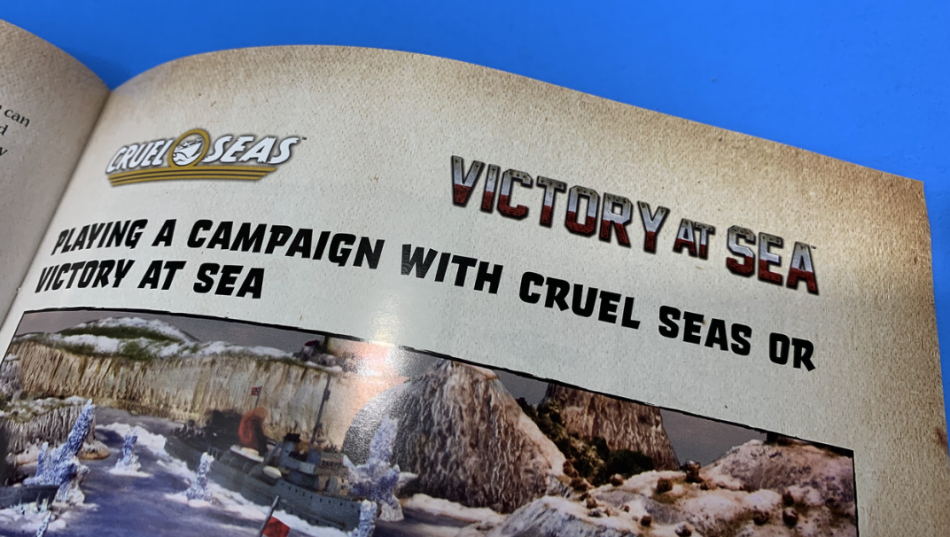
Results
The campaign section of the rules suggests that following battles, add up the value of destroyed units, rounding the total up to the nearest 100. The side that lost the battle, adds 1,000 points to their casualty points. The casualty points then must be deducted from any combination of forces of that type still active in the campaign.
Reinforcements arrive as either a regular force of 1,000 points or that 1,000 points can be split up among existing units (up to their totals of 1,000 pts each). The remaining points would be fielded as understrength forces. Note, Bolt Action, and Victory at Sea/Cruel Seas is suggested to have forces of 1,000 points for each force on the board. Air units (Blood Red Skies) begin at 500 points per unit.
Historical flavor and adjustments
One critical factor that all campaigns have to manage is the attrition of forces. Eventually, forces may get as far out of balance as a 3:1 or even 4:1 ratio. Those odds aren’t fun to face unless missions and victory conditions are adjusted to give the underdog a chance to succeed.
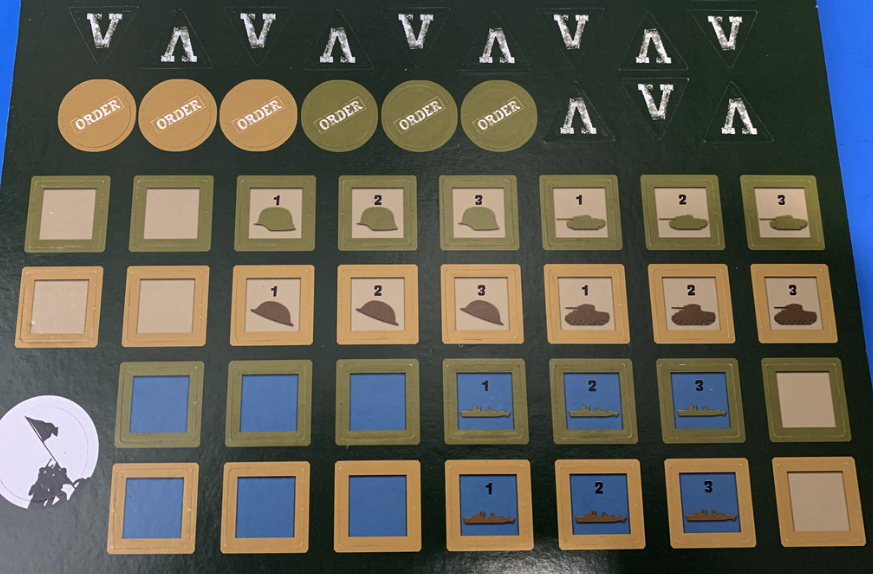
In addition, players and campaign organizers should keep in mind that all of these cards can increase the unbalanced aspects of games as well.
To bring the individual games back into balance, players should consider adjusting game missions to mimic some of the new missions from campaign books (Such as the Western Desert book). Success for a smaller pointed force may be as simple as holding a position or objective. Or, perhaps slowing an advance of an overwhelming force across the game board.
Keep in mind that the missions in the core Bolt Action rulebook are geared for equal forces. Some elements of a mission, such as a preparatory bombardment might need to be scrapped if the defender’s force is too out of proportion. The key here, especially when adding in the effects of the various cards, is to keep the fun of the game, and victory within grasp for both sides.
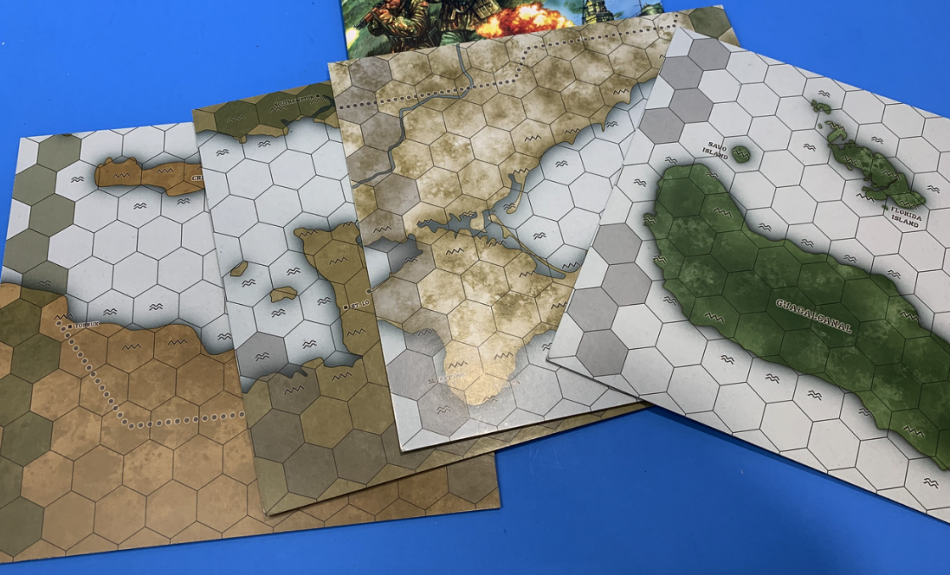
Overall Impression
Our game group hasn’t had a chance to play even the board game version yet, but we’ve been anticipating this set from Warlord.
There is a ton of potential for use in campaigning, and the door is still wide open for the designers to add more cards, and map boards to the set.
I’m excited to hear how gaming groups are using the rules in their home campaigns. If you’re using the new system, drop a comment below with your setup for the upcoming battle season.
Troy is the editor of NDNG. When he’s not chasing typos and wrangling unruly writers, he’s probably running a demo game somewhere. If encountered at a gaming convention or event, keep him supplied with coffee and cookies, and all will be well.

Nice review, but one can sees that you did not try yet the game.
I think it can be a good start for a club campaign, but much has to be redone. The air strike for us is useless, why should I remove on a dice roll an army from the map, when my purpose is to bring the opposing players to a match.
Similiarly, the hidden movement on a such small map does not bring much to the game. With so few exagons you will always know that the enemy (and on the other hand you) are directed toward the objectives. Faints are not possible.
The cards must be also be redone, too few initiative cards are drawn per turn with too little effect on the games (i.e. battles).
We are working on a great campaign this sommer based on Combined Arms. I will be happy to discuss with you about the amendments we did.
Intriguing